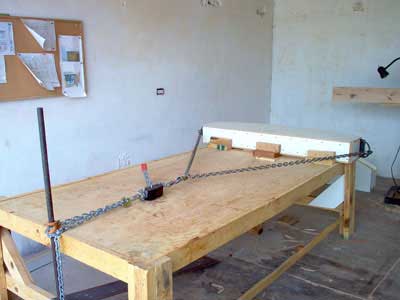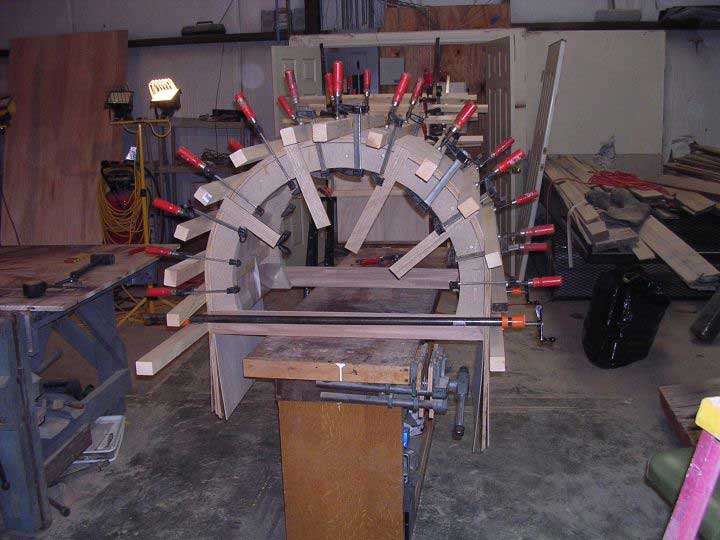Question
I am building two curved front vanities. I plan to laminate three layers of 1/4" x 6" alder equal to the width of the vanity, and then glue up the laminations for the doors and drawer fronts. I built a mold and thought to bend the laminations with a 6" x 1/4" steel strap connected to a come-along.
In the photo below, when I pull the strap it is deforming and the laminations are not closing up. Does anyone have any suggestions on a better way to do this or how to set up the pulling mechanism so I get good joints along the entire lamination?

Forum Responses
(Cabinetmaking Forum)
From contributor S:
I would suggest making a positive and negative form and clamping them together. It seems like you've already got the positive form built, and all you have to do is make a negative to fit over that and clamp them together. Be sure to account for the fact that the radius changes by the thickness of your material. Make sure to oversize your pieces that you are laminating both width and length. Finish the edges of your form or cover it with wax paper to prevent the glue from sticking to it.

It would be better if you used 1/4 bending plywood such as 1/4 Plascore bent over a form using a vacuum bag and plastic resin adhesive. As the bending plywood has no shape memory and the Plascore is soft, and with the bendable there will be zero spring back. Also, the veneered face can be laminated on the same way during the main bend or later.
I got a vacuum pump with 4' x 4' bag for 365 USD and I added a 4 x 10 bag for only 189. USD will work better than your strap and come-along, will have a less chance of something flying across the shop.
I have done lots of laminated frames for 35 - 50 foot racing sloops using 3/16 inch mahogany and Alaskan yellow cedar strips on a positive form and clamping from the center out in both directions with nothing more exotic than C-clamps (lots of them, though). I used West System Epoxy but the principle will work with any glue. I did make my forms a little tighter at the ends than the finished curve to accommodate the inevitable spring back.